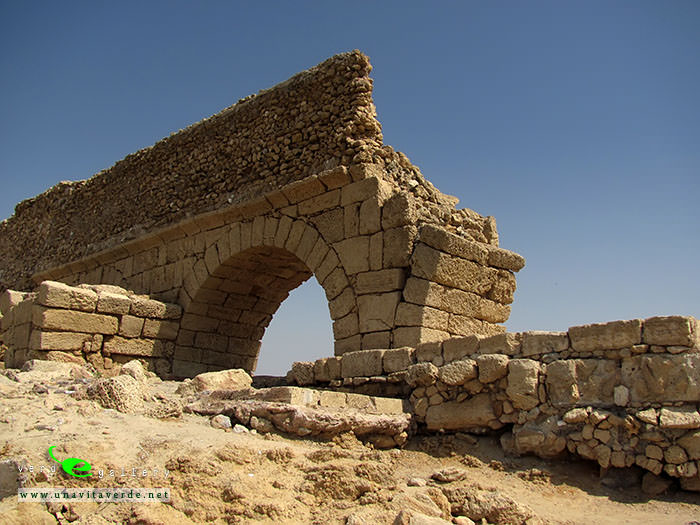Caesarea aqueduct, Israel
The Judaean port of Caesarea on Israel’s Mediterranean coast had no reliable source of fresh water when construction on the city began around 22 B.C. So King Herod commissioned this raised Roman aqueduct to deliver water from the springs of Mount Carmel nearly 16 kilometers away.
A second “lower” aqueduct was built by the Legions of the Emperor Hadrian (2nd C AD). It brought water from Tanninim (Crocodiles) river, farther from Shummi. This section, with a tunnel of about 6km long, was tapped into the older aqueduct, and doubled its capacity. This new source of water was added to the right of the first canal, and the aqueduct was thus doubled in width. The builders used the same building materials and style, so it is hard to see that the pair of tunnels were built in different ages.
The aqueduct continued to supply water for 1200 years. During the ages it was repaired several times.
After that time the aqueduct was beyond repair. Therefore, in the Crusaders period (12th C aD), a third, smaller, canal was built that replaced the first two.
Another (forth) lower aqueduct was built from a new source of water: the springs at Maagan Michael, several kilometers north to Jiser-E-Zarka.
This pictures have been taken on 28 of September, 2011.


















